Food waste is one of the biggest problems that we face. Learn where wasted food mounts up, the levels of avoidable food waste, and how to stop it.
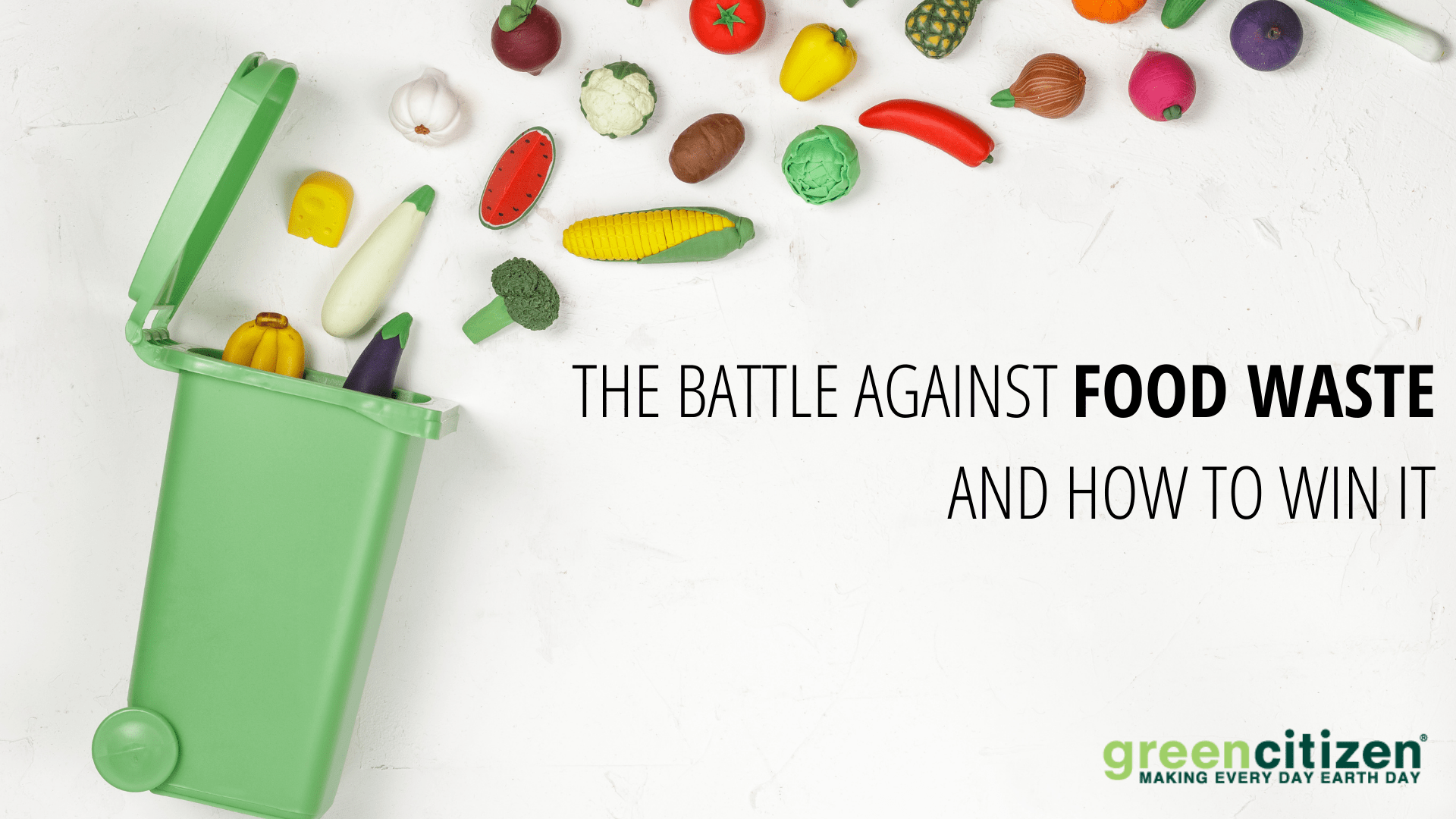
Would you be shocked to hear that you waste about 40% of all the food you buy? Most people find that hard to believe, but they are equally surprised when they start paying more attention to the wasted food in their trash.
And that’s where the problem often starts.
You throw food in the trash and then don’t see it again. And all those small amounts add up completely unnoticed.
The problem with that kind of “accidental ignorance” is that it’s causing untold damage to the environment. And that’s what I’m planning to tackle here.
I’ll show you exactly where wasted food mounts up, the levels of avoidable food waste, and some simple tips to help you with reducing food waste in your home.
And I also have a small food waste challenge at the end.
Understanding Food Loss and Food Waste
To fully understand the problem of wasted food, you have to look at the food production, retail, and consumer levels.
Let’s take a closer look.
Food Loss
Organizations like the US Department of Agriculture and the UN Food and Agriculture Organization define food loss as any food wasted from the farms and crops to transportation, grocery stores, restaurants, and private homes.
It’s the most complete way of measuring food waste as it provides the full picture.
Essentially, this includes failed or damaged crops, food spoiled during transport, products not sold in stores, and anything we throw in the trash at home.
There certainly is a level of unavoidable food waste, even if you buy food from your local farmers market where producers have traveled only a few miles. But the important thing is that there is a number that identifies all the food wasted in a given year.
I’ll shock you with some data shortly.
Food Waste
Food waste, on the other hand, focuses directly on grocery, retail, and discarded food in homes. That means anything that stores take off the shelves because of the look, color, or sell-by dates, as well as uneaten food in restaurants and homes.
This is the one area where we, as consumers, can make the biggest impact to reduce food scraps and food waste generated directly by the choices we make.
More on those shortly.
Food Lost at Different Levels Of The Food Supply Chain
The UN Food and Agriculture Organization, along with other global government agencies, try to take a detailed account of where the greatest losses are in the food industry.
And there are six main levels of food loss we need to take a closer look at.
Food Loss At Farming Level
This is where arguably most of the food loss occurs and where it also has some of the largest environmental impacts.
See, producing food on farms is incredibly energy and freshwater-dependent, and those are two factors that are influencing our weather and environment. By some estimates, farming is responsible for over 15% of all energy usage and 80% of water.
Yes, that’s eighty percent!
And when you consider that 20 billion pounds of food are lost on farms every year, that paints a pretty damning picture.
But how is so much food discarded on farms?
The unfortunate reality is that there are a few main factors that contribute to this food waste:
Food Loss At Fishing Level
Similar problems of food wastage happen in the fisheries industry, where estimates highlight that about 20% of all fish are discarded.
Some European estimates are even worse where research has pointed to a waste of 40% and higher. A lot of that comes down to the industrial-scale fishing trawlers. But it also seems like it’s impossible to avoid catching more of a certain fish than allowed by a quota.
That means if a trawler tries to catch mackerel, but the net also catches cod, then the cod will end up dead in the water because the trawler doesn’t have a cod quota to bring it to land.
Food Loss At Transportation Level
Transporting food on boats, trucks, and trains is a major part of the supply chain. And keeping food fresh while it’s in transit is quite a large expense. In many cases, cooling large quantities of fresh product enough to make more of it last would make the products prohibitively expensive.
As a result, food producers and distributors factor in a percent of food that will spoil. And that food is sorted and dumped before it makes it to a shelf.
Food Loss In Packing Houses
To distribute food to grocery stores, a lot of it first gets to a packing house. This is where so much of it ends up in plastic wrapping, bags, and other packaging.
But something else happens here.
Everything from fresh fruits to vegetables, seeds, and nuts goes through a screening process. If it doesn't pass a visual test, even when it’s still 100% edible, a product won’t continue on the food chain.
And all that food just ends up in the trash.
Food Loss In Manufacturing Facilities
Food processing facilities end up losing a ton of produce due to spoiling, damage, or contamination. Currently, there are estimates that say that about 30% of this manufacturing food loss goes to the animal feed industry, which is a positive thing.
But that still leaves billions of pounds of food that just become organic waste.
Food Loss In Distribution Networks
Another significant part of the supply chain before food hits the shelves in grocery stores is the distribution network of warehouses. This is where endless trucks arrive with massive amounts of produce and where they then need to be split up into the right order sizes.
It’s a time when no matter how well the system works, the food will be stationary and vulnerable to perishing. Add the occasional problem with incorrect or delayed refrigeration due to transport issues, and there’s a significant chance that part of the food supply ends up in the trash.
Food Wasted At Different Levels
Now that you have a better understanding of how the food system is responsible for huge amounts of food loss, let's see what things look like at retail and consumer levels.
We refer to this as wasted food rather than food loss to help distinguish between the two.
Food Waste in Grocery Retail
Research has shown that grocery stores are responsible for over 38 billion pounds of vegetable and fruit waste. Yes, that’s billions, and the monetary value of that is huge.
And before you think that this doesn't affect your pocket, be aware that the consumer ultimately pays for that loss.
But you also need to add other perishable foods like fish, meat, poultry, baked goods, and processed food as well. This adds even more food waste at a time when over 12% of U.S. households have to deal with food security issues.
The crazy thing is that grocery stores often trash perfectly edible food purely for cosmetic reasons. Rather than make a section available to display misshapen carrots, imperfectly colored apples, and tinned food with dents in cans, they simply end up in the trash.
And only 10% of that waste is recovered for use as animal feed or composting.
Food Waste in Restaurants
Another place where tons of perfectly good food accumulates is leftover food in restaurants. While some people make an effort to ask for leftovers to be packed, either to be reheated the next day or to feed pets, there are still vast amounts that end up in the trash.
Wasting food in this way amounts to about 30 billion tons, according to some estimates.
Some of the practices that contribute to this are oversized portion sizes, extensive use of imported and out-of-season food, and fully stocking buffets all day long and trashing them at the end of the day.
And when restaurants don’t implement a simple sorting process and collection for composting and animal feed, then it contributes to excess food loss.
Food Waste in Households
Now we’re getting to the area where your actions are mostly going to contribute directly to food loss.
And it’s all down to some pretty awful statistics about different reasons behind household food waste.
1. Food Spoilage
According to the Natural Resources Defense Council, about 2/3 of food waste at home is due to products spoiling before people get a chance to eat them. That makes it by far the most dominant reason and one that really should be completely avoidable.
More on avoiding waste shortly.
The main reasons for this probably sound all too familiar:
2. Food Scraps
The next most common reason for household waste is uneaten food from meals. Just like in restaurants, people tend to cook and prepare too much food. And while sometimes it’s entirely planned to freeze some of the excess food for another day, way too much of it ends up in the trash.
Just spend a week weighing the leftovers from meals to get an idea.
An interesting analysis from the Natural Resources Defense Council has highlighted that in the last 15 years, serving sizes in cookbooks have gone up by 36%. It would explain obesity issues, but also why people end up with so many food scraps.
3. Food Date Labels
Food date labeling is possibly one of the most annoying things when it comes to food preparation. How many times have you started preparing a meal, only to grab some ingredients that are several weeks or months out of date?
But there is also a lot of confusion around food date labels. Ask some friends and family members if they know the difference between a use-by date, sell-by date, and best-before date.
The result of this is that people often throw out food that is still perfectly safe and good to eat, just because it’s gone beyond an arbitrary best-before date that food manufacturers can completely make up out of thin air on the basis of some peak quality concept.
4. Poor Grocery Planning
And finally, too many households head to the grocery store with a list but not a clear understanding of how much of each item they really need.
You need some bananas and grab the first large bunch of yellow ones. There are eight on the bunch, and you only have one with breakfast every other day.
Sound familiar?
Another reason we end up buying too much food is that we fall for all those great offers that are too good to be left behind. But when you buy seven different things just because they are on offer, and you don’t work out how and when you’ll use them, then they more often than not end up in the trash.
Start marking those special offers with a sticker, and every time you throw one out, take note of whether you still think it was such a great offer.
Now let’s see what the costs of this food waste are.
And I don’t mean financially.
Environmental Impact of Food Waste and Food Loss
For some, the obvious problem of food waste is the huge amount of money that literally ends up in landfills. But, to be honest, that’s not even remotely as costly as the impacts that food waste has on the environment.
And the financial costs associated with continuous environmental exploitation and damage will far outweigh the cost of food waste.
Let me break this down.
1. Greenhouse Gases
The most worrying part of food waste is where it ends up. According to data from the US Environmental Protection Agency, only 5% of food waste ends up on a compost heap.
Here’s the problem.
When organic waste ends up at a landfill, it predominantly releases methane during the rotting process. And methane is one of the most dangerous greenhouse gases and is far more dangerous than carbon dioxide.
Some research in the UK has estimated that rotting food at landfills accounts for the same climate impact as 20% of all the cars on UK roads.
But what you also have to keep in mind is that this is only the tip of the iceberg. From farming machinery to transportation and cold storage, there is even more greenhouse gas tied up in food waste.
Let’s take a closer look.
2. Wasted Resources
Because of all the food loss and waste, producers plan ever-larger crops to keep the food supply filled to the brim. But just imagine what that means when you look at the entire food system.
Farmers use more energy to run machinery, spread more fertilizer, and order more seeds for crops and feed for livestock. And large amounts of the effort use up all types of resources for nothing.
There’s also the issue of water. Because farming is the biggest sector for water usage, there is a huge problem of lost water supply, which is especially a problem in drought areas.
Then tons of food is transported around the world, causing even more energy usage and carbon dioxide and other greenhouse gas emissions. Facilities for storing food are larger than they need to be, and more transport vehicles are on roads.
It’s a colossal amount of wasted resources.
3. Unnecessary Land Use
This is another huge food waste problem. Imagine if you took away a large portion of the food loss and waste, and what that would mean for the amount of land needed to produce less food.
We would need to use far less land for food production, which would bring huge benefits for our environment and nature.
See, farming causes a huge loss of biodiversity, and when large areas of land are tied up in just a few different crops, then you have a lot fewer trees and forests. If we could reduce food waste, we’d end up with few greenhouse gas emissions from production and rotting at landfills, and reforested farmland would further reduce the problem of greenhouse gas in the atmosphere.
Read More:
How Much Food Do We Americans Waste?
I could just say a lot and leave it there, but I think it’s important to show people how much wasted food there really is.
The Amount Of Wasted Food
Let's face the fact — we all have wasted food in our lives.
And this food waste makes up almost a quarter of municipal solid waste.
Now let’s put that in some perspective.
Research suggests that the average American consumes about 2000 pounds of food per year. So, if we divide 70 billion pounds by 2,000 pounds, we get a figure of 35 million.
Yes, every year, there’s enough food loss and waste in America to feed 35 million people. That’s almost enough to feed the whole of California and more than enough to feed Texas, the two most populated states.
Worse yet, if that waste could be redirected to places where food supply is not as abundant as in the Western world, then it could end so much suffering.
And that’s why we should all pay more attention to ways to prevent food waste.
According to the research from the Natural Resources Defense Council and EPA, Americans dump about 70 billion lbs. of food into landfills every year.
The Main Reasons For The Waste
There are a few main reasons why Americans end up wasting so much food.
First of all, there’s the problem of not planning well enough and buying too much food. It’s very common for people to buy a bit extra to make sure they don’t run out of food. And then, all of a sudden, they order some take-out or head to a restaurant meaning that there’s a surplus at home.
The other common problem is that people don’t understand food labels. Too many people throw out perfectly edible food because the best before date has passed. All that date indicates is when a theoretical peak quality is reached, and food manufacturers are known for keeping those dates short.
And then there’s cooking and preparing too much food for meals. Cooking more than you’ll eat because you need it for another day is one thing. But in so many cases, the excess food simply ends up in the trash.
The Food Recovery Hierarchy - An EPA Guideline
The US Environmental Protection Agency has created the so-called Food Recovery Hierarchy. The idea behind it is to prioritize actions at the production, distribution, retail, and consumer levels.
The higher up you go in the hierarchy, the larger the impact will be on tackling food waste.
1. Source Reduction
This part of the hierarchy focuses on all the waste at the production level. It’s about getting farmers to avoid surplus food crops that end up going to waste on the fields because there is no demand for it.
The EPA suggests that farmers conduct waste audits and take a closer look at food order patterns and overall supply data.
And for consumers, the goal is to reduce how much food they buy in order to reduce the demand side that leads to a lot of the surplus in the first place.
2. Feed Hungry People
The unfortunate reality is that there are still millions of people around the world who don’t have enough food. Rather than producers, suppliers, grocery stores, and households simply dumping food, more food should be redirected towards those that are hungry.
For consumers, that might mean making food donations to a local soup kitchen or homeless shelter. And for the world's food producers, the goal should be reducing food loss by finding ways to redistribute any surplus to hungry people.
3. Feed Animals
While a lot of food loss and waste wouldn't be safe for humans to eat, that doesn’t mean it has to become a methane-producing mess at landfills. By redirecting more food waste to be used as animal feed, it’s possible to have two big impacts.
First of all, the food doesn’t end up causing greenhouse gasses. But there’s also a huge saving from an animal food source perspective. When we redirect food waste to animals, the demand for animal feed will go down, and that will further reduce the environmental impact of excess food production.
4. Industrial Uses
Another way to deal with a lot of organic waste, including difficult to manage fats, oils, and grease, is to turn them into fuel. There are anaerobic processes that can transform tons of waste into gas that can be used to produce electricity or to heat homes.
There are also ways to transform oil and fat into biodiesel that can fuel engines. While this is still a polluting form of energy, these types of actions would further reduce the reliance on fossil fuels.
And because the gases emitted from rotting food at landfills would be doing damage anyway, there is still a benefit from redirecting the energy the waste still contains.
5. Composting
The ideal way to introduce waste reduction at home is to start composting your plant-food waste. Composting reduces the amount of climate-changing gases, and there is a highly beneficial end product.
You can use compost in your garden and to produce your own food. It’s the absolute best way to feed plants.
Alternatively, if composting at home isn't viable, then find out if your waste collection service provider offers compost material collection. If not, then most cities these days have community-based organizations that collect compostable stuff to reduce food loss.
6. Landfill
This should be the absolute last resort and really only be a tiny fraction of all the food loss. Some food will always end up in landfills, but if this hierarchy becomes something that people at all stages of the food supply chain adhere to, then we should be able to get to a fraction of food ending up at a landfill.
Let’s now take a look at how you can address food waste.
16 Tips to Reduce Food Waste
Here are 16 simple tips to help you make a difference in food waste reduction.
1 - Plan Your Grocery Needs
When you sit down to plan your grocery list, carefully think about how much food you will actually eat. Yes, this is more difficult when you have a family, but all the evidence suggests that we get human consumption patterns completely wrong.
If you’re shopping for an evening meal for two adults and two kids, then don’t buy that extra chicken breast just in case.
In reality, if you do end up with not enough ingredients once in a while, you’ll be able to adjust your recipe.
2 - Avoid Buying Things Not On Your Grocery List
One of the biggest parts of the food waste problem is that people end up with surplus food that they never had on their grocery list.
Try this out for yourself.
Label all those special offers you bought on impulse at the store. Then, whenever you end up throwing food out, be conscious of the fact that a lot of it has that colored label on it.
You’ll quickly find that those special offers were a complete waste of money. And in many cases, they have very short dates on them, so you end up getting caught out twice as fast as if you’d stuck with your list.
3 - Understand Food Date Labeling
This is possibly the easiest way to reduce food waste. Way too many people don't fully understand what the date labels are telling them.
Sell-By-Date: This is purely a date that manufacturers use as a guide for grocery stores to take things off the shelf by that date. The crazy thing is that this has nothing to do with peak quality or food safety. So don’t let this be a reason for taking it off your pantry shelf and into the trash.
Best-Before-Date: This is quite a controversial date as food producers choose this to indicate at what date the quality might start to go down. It has nothing to do with making sure you only eat safe food. So, unless the product has gone moldy or otherwise spoiled, this really is a date to encourage people to buy more food.
Use-By-Date: This is really the only date you should pay careful attention to. A lot of food might look like it’s safe to eat, but things like meat, fish, and poultry can spoil and make you sick.
4 - Shop At Farmers’ Markets
One way to reduce food waste in the huge supply chain is to shop as much as you can at a local farmers’ market. You can talk to these people directly about sustainable food management practices on their farms.
And the food won’t have traveled halfway across the country or even the world.
The other thing that most market sellers don’t do is sort out ugly food. Just because an apple, carrot, or eggplant doesn’t look perfect doesn’t mean that it will taste any different.
5 - Buy Local Seasonal Food
One way that a consumer can help with eliminating food waste in the supply chain is to buy as much seasonal and local food as possible.
The further food has to travel, and the longer it spends in transit and warehouses, the more of it will spoil along the way. You can completely avoid that for the majority of the food you eat by simply switching to local food producers.
6 - Choose The Ugly Food
By the time most food gets to grocery stores, a lot of the ugly and strangely formed and colored food will already be gone. But you sometimes still find that misshaped carrot that nobody wants.
This is even more the case at farmers’ markets, where they don’t tend to remove ugly food.
And when you make it your priority to pick out that food, you can make a dent in the food loss mountain.
7 - Store Food Correctly
Another thing that regularly happens to people is that they end up putting things on a pantry shelf that should have gone in the refrigerator. Or maybe putting opened food items into an airtight container to keep it fresh for longer.
Also, during hot summer months, try to store more of your perishable fruit and veg in a cold place and away from sunlight.
Storing food correctly is a highly effective way to make sure that less food spoils prematurely.
8 - Arrange Food By Date
How often have you searched for something on a pantry shelf only to find a load of cans or other packaged food that was out of date? They ended up at the back of a shelf in a difficult-to-see and reach spot, and you simply forgot they were there.
Make it your habit to sort your pantry with all the shorter-dated items at the front. That way, you constantly rotate food and eliminate food loss.
9 - Preserve Food
It has happened to me on a regular basis that I arrive home after grocery shopping with some vegetables that I thought I was out of. All of a sudden, there are more cucumbers than I can eat in a week.
The solution is to resort to a food preserving technique that humans have used for thousands of years. Simply learn how to make a pickle, and your excess food problem is solved.
And for fruit, you’d be amazed at how little effort is involved in making a jam that will last for several weeks.
10 - Blend More Food
One thing I was always surprised by was how much plant waste there was after preparing a meal. Between the skin and stems, there seemed to be quite a lot of weight. And while it did end up on the compost heap, it just seemed like a waste.
What you can do instead is cook those stems and skins and use them to add to a vegetable stock or soup. Alternatively, you can blend them into a green smoothie.
There is plenty of evidence that these parts of plants contain huge amounts of nutrients.
11 - Reduce Your Serving Sizes
Here’s something you should do after every meal. Scrape all the leftovers onto one plate, and then assess how much of a portion was leftover. It’s only when you see it all in one place that you get the picture of how your portion sizes might be off the mark.
Then simply reduce your portions by 5% or 10% until you get to a stage where everyone is still full, but your trash can doesn’t fill up.
12 - Start Weighing Your Food Waste
I highlighted above how much food waste the Natural Resources Defense Council and Environmental Protection Agency estimate for each year.
When you hear of billions of pounds, it’s difficult to visualize. But a clever way to adjust your mindset towards food waste reduction is to weigh all the food you dump in the trash.
Then add up those daily amounts and see what it means on a weekly and monthly basis.
You’ll be shocked.
13 - Calculate The Value Of Your Food Waste
Once you have weighed the food waste, try to put a dollar value on it. Every time you dump half a loaf of bread, a few bananas, and an out-of-date can of tuna, write it down.
Then add it all up at the end of the month and see how many hundreds of dollars you’re wasting. Seeing that completely unnecessary financial loss is a great way to encourage everyone at home to cut food waste.
14 - Compost Plant Food Waste
Now, you won’t be able to eliminate wasted food altogether, but you can cut food waste at landfills by starting your own compost heap. You can buy designated storage bins that work both outdoors and indoors.
And you’ll end up with an amazingly fertile compost to grow some of your own food.
15 - Donate To Food Banks
A lot of people overlook food donations as an option. They see something on the shelf that they don’t think they’ll eat, and it ends up in the trash.
Instead, if you donate food to a soup kitchen or homeless shelter, then it will help out someone in need and also reduce waste at landfills.
16 - Freeze Food Before It Goes Bad
And our final tip for food waste reduction is to keep an eye on the food that is coming up to its use-by date. For example, if you have a spare loaf of bread that will be out of date tomorrow, simply freeze it and take out as many slices as you need.
You can do the same with fruit and vegetables, as well as with leftover meals. Your freezer should become an ally in your efforts to make a big change.
Let’s Try To End Food Waste Together
At this stage, you should be fully aware of the amount of food that is wasted and what kind of devastating effect it has on the environment. And you’ll also have a great idea of how to reduce what percent of food your household wastes.
Now here’s a food waste challenge.
Start to track your own waste over a couple of weeks to get an idea of your average waste. Then start to implement the above tips and keep measuring how much food ends up in the trash.
Then, come back to us and share in the comments below how much of a difference it has made to your environmental impact.

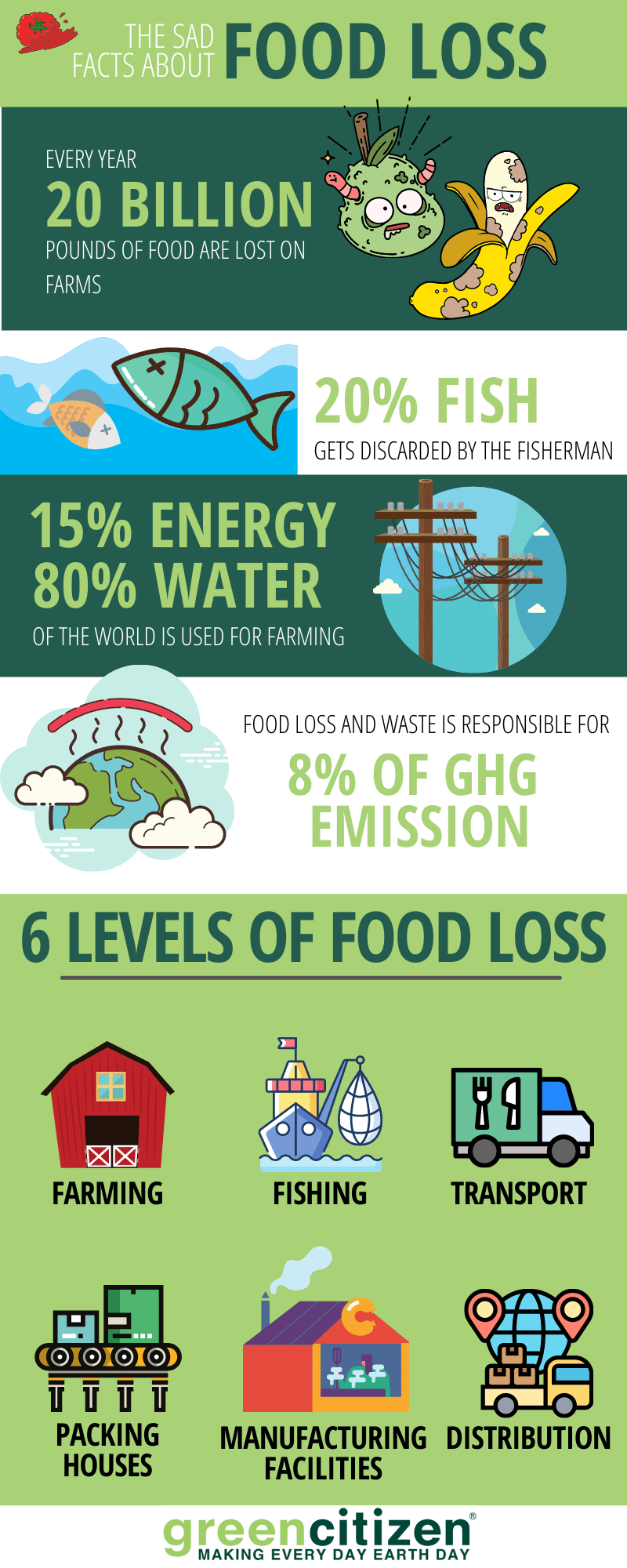


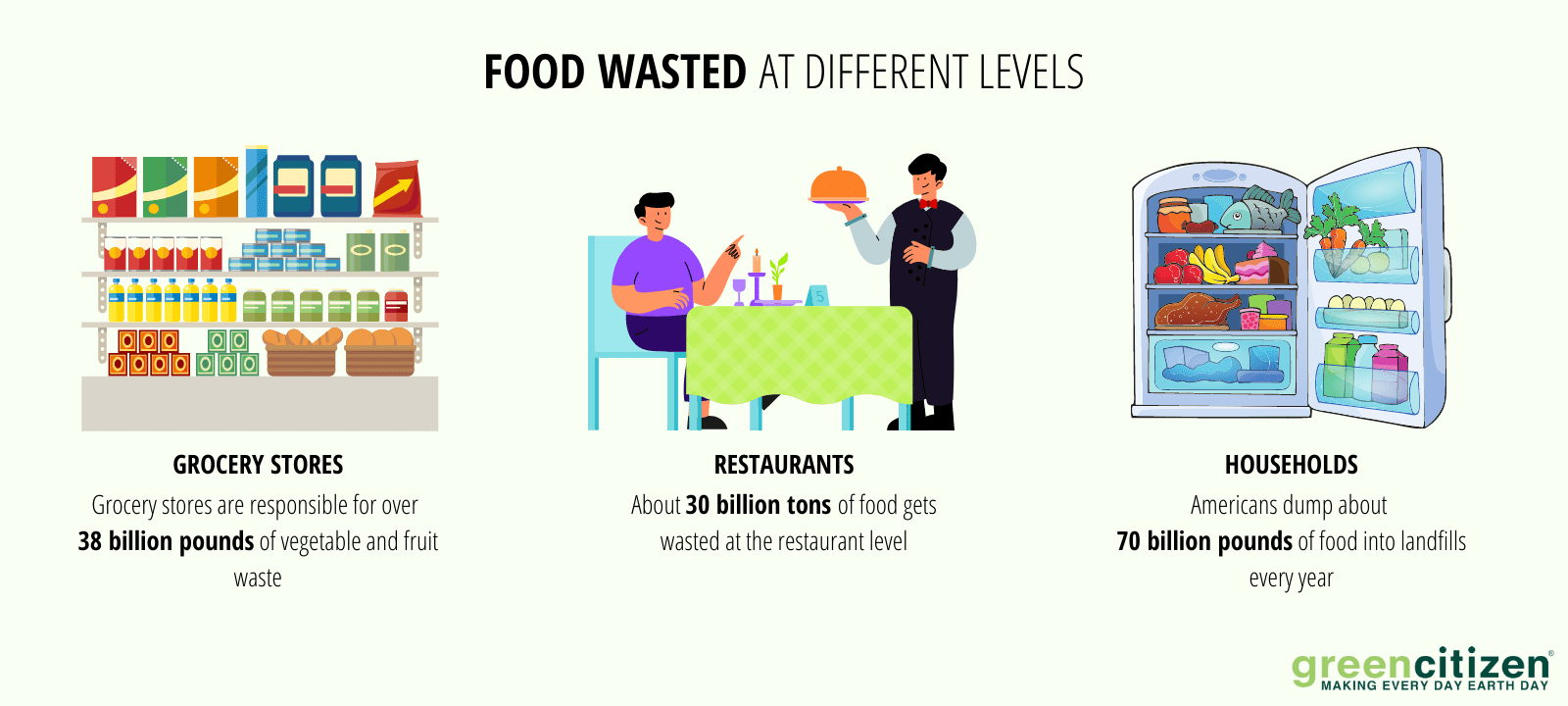
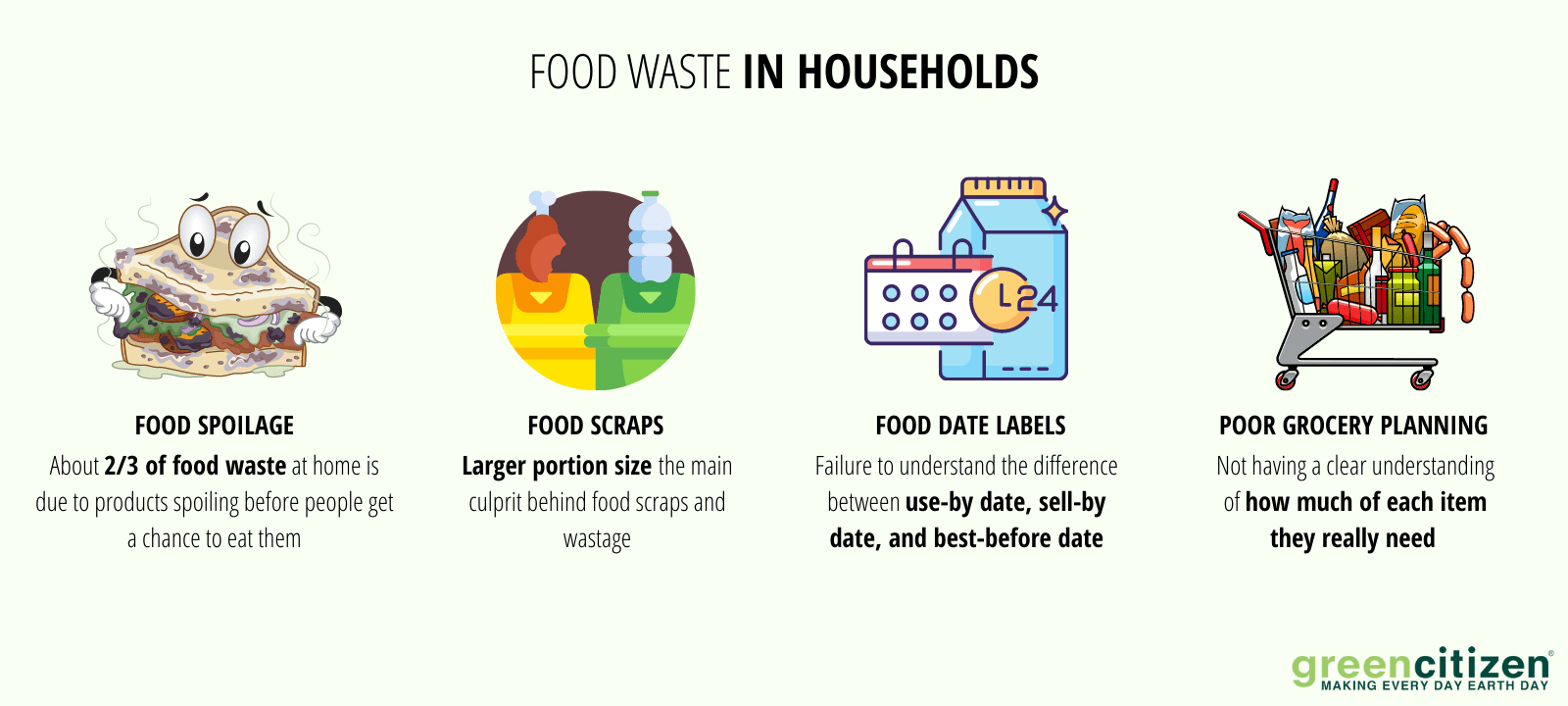
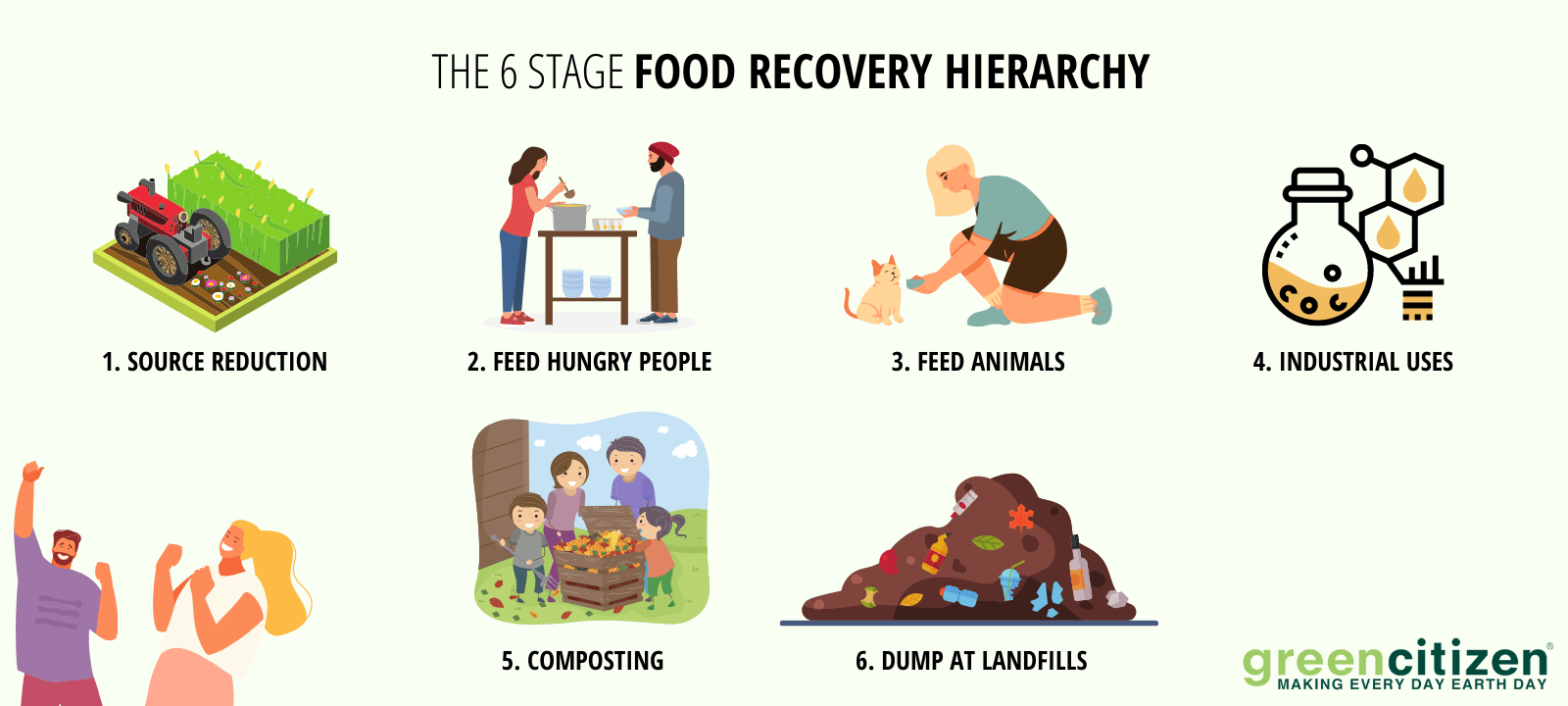










Pingback: 20 Sustainability Blogs You Should Definitely Follow in 2022